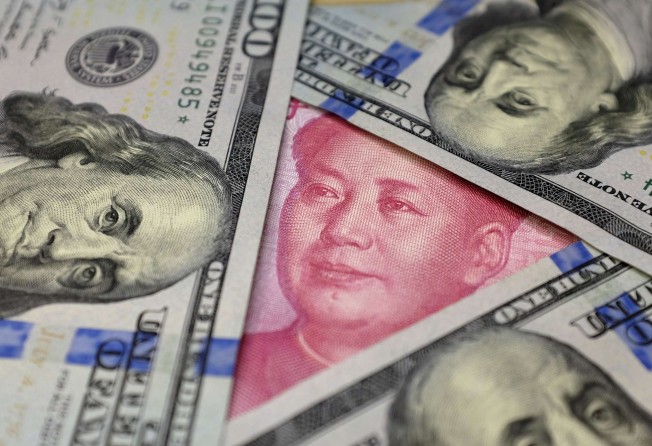Yuan weakens further on tepid economic data and rate-hike gloom
The onshore yuan in Shanghai at one point weakened to 6.5908 against the US dollar, breaking traders’ mental barrier of 6.59 to hit its lowest level since mid-January.

China’s yuan currency continued to weaken on Wednesday morning and broke a market threshold of 6.59 to the US dollar.
Speculative trading has risen because of tepid economic data and concerns over an interest rate hike in the US, analysts said.
The onshore yuan in Shanghai at one point weakened 0.19 per cent, or 125 basis points, to 6.5908 against the US dollar, the lowest level since mid-January.
In Hong Kong, the offshore yuan also tumbled, falling 89 basis, or 0.14 per cent, from the day before, to hit the lowest point in nearly four months.
The People’s Bank of China (PBOC), the country’s central bank, on Wednesday set the yuan reference point against the US dollar at 6.5889, 99 basis points, or 0.15 per cent, weaker compared with Tuesday as the yuan continued to depreciate against the US dollar.
Traders are allowed to deal up to 2 per cent either side of the reference point for the day.
“Speculation is accelerating on the ongoing weakness in [China’s] Purchasing Managers’ Index” Stephen Innes, senior trader at OANDA, said. “I think much of the pace will be dictated by Friday’s non-farm Payroll number [from the US] as this will likely dictate whether a near-term rate hike is on the cards or not.”
China’s official manufacturing PMI for May came in at 50.1, the same as a month earlier. The non-official Caixin manufacturing PMI for May was 49.2, the lowest in three months and has been below 50 for 15 months. A reading below 50 indicates contraction.
Alan Luk Ting-lung, Hang Seng Bank’s head of private banking, said the depreciation of the yuan has been more obvious since the middle of May.
There is a continuing capital outflow from the mainland to Hong Kong as Chinese bought US dollar denominated insurance products or Hong Kong dollar denominated equities to hedge the yuan’s depreciation risk, but there is no sign of a sharp devaluation of the currency, Luk said.
“The offshore yuan normally falls quicker than the onshore one to reflect investors’ expectations of a downside trend to the currency, because the PBOC does not intervene in the offshore market , but recently it is the onshore yuan which had dropped more,” Luk said.
A more market-driven foreign exchange policy has increased the daily volatility of the onshore yuan, and the rising concern of a US rate hike has also added pressure, but that does not change the fact that the currency is falling in an orderly fashion, Luk said.
Luk said he expects the red back to fall 5 per cent this year and reach a level of 6.7 to 6.8 against the greenback.